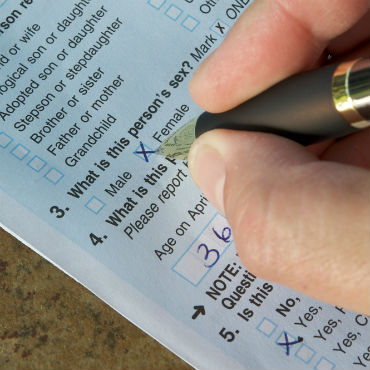Could the 2020 census be another HealthCare.gov?

While it's too early to yell boondoggle, GAO says any delays and "we very well could have another HealthCare.gov on our hands."

April 1 is marked on the government calendar as Census Day. This year, Census Day marked a milestone in the countdown to the 2020 enumeration -- we're now closer to the beginning of the coming 2020 census than to the opening of the previous 2010 population count. The 2010 Census was notable for running about $3 billion over budget, and for the failure of a plan to design and build custom handheld devices to allow census workers to do their counts in a connected, mobile IT environment.
Census officials and legislators are hoping for a better outcome this time around, and a major, department-wide IT overhaul is at the center of the effort. The bureau is looking to save $5 billion in projected costs through improved use of existing government data, acquisition of commercial data and improved technology. The Census Enterprise Data Collection and Processing Investment (dubbed CEDCaP) will centralize data collection for all census activities, not just the decennial count required by the U.S. Constitution.
New technology to manage and optimize field operations, down to the routes taken by door-to-door canvassers, is projected to save $2.3 billion, per Census Bureau estimates. This includes a smartphone or tablet reporting system that is in development. The planned Internet response system, currently being tested, is projected to save about $550 million. Improved address validation using data from the U.S. Postal Service, commercial aerial imagery and other data sources will save the bureau from having to use its army of enumerators to update its master address list, potentially saving $1 billion. The bureau also hopes to save $1.2 billion by making better use of existing information already collected by the government or available from commercial sources. Additionally, the system is intended to continue operations after the 2020 count.
"In the case of the decennial census, we built systems that were retired at the end of the each census. Now, we intend to create an integrated shared-service, which we can use continuously across all of our programs, that is adaptive and scalable," Census Director John Thompson said in his written testimony at an April 20 hearing of the Senate Homeland Security and Governmental Affairs Committee.
CEDCaP combines 14 major IT projects, four of which directly relate to the 2020 census. CEDCaP launched in October 2014, but the Government Accountability Office has already flagged the project, including it on GAO’s 2015 "High Risk List," in light of the bureau's troubled history with large-scale IT projects.
While it's not time to panic about a large scale boondoggle yet, GAO is watching the bureau very closely with that possibility in mind. The CEDCaP schedule has already shifted, noted Carol Cha, director of IT acquisition management issues at GAO. In September 2015, the Census Bureau expects to release plans for the 2020 survey that will help set some key business requirements for CEDCaP, including the Internet response option. Currently, the bureau is planning to conduct end-to-end testing in October 2018 on the systems needed to conduct the 2020 enumeration.
At the Senate hearing, Cha warned that new delays could threaten the viability of the project.
"If this date slips to the right, and systems testing is compressed, then we very well could have another HealthCare.gov on our hands," Cha said.
Sen. Kelly Ayotte (R-N.H.) shared the worry about pairing the large scale IT modernization with the hard deadline of the 2020 census. "We're particularly bad at this. Throughout the government we've had numerous occasions where we've invested a lot in a particular system and haven't ended up with the system we hoped for and the cost went way over," Ayotte said.
Cha said that "the train hasn't left the station," in terms of designing requirements for CEDCaP, and she advised the Census Bureau to try to focus on simpler solutions in order to stay within the cost and schedule framework required to pull off the 2020 enumeration.
Thompson's five-year term as director is over at the end of 2016, just as a new administration will be preparing to enter the White House. The bureau "is on track to do a good census" in 2020, whether he continues as director or a new person takes the job, Thompson told the committee.
NEXT STORY: 'The most unpopular person in the Pentagon'



